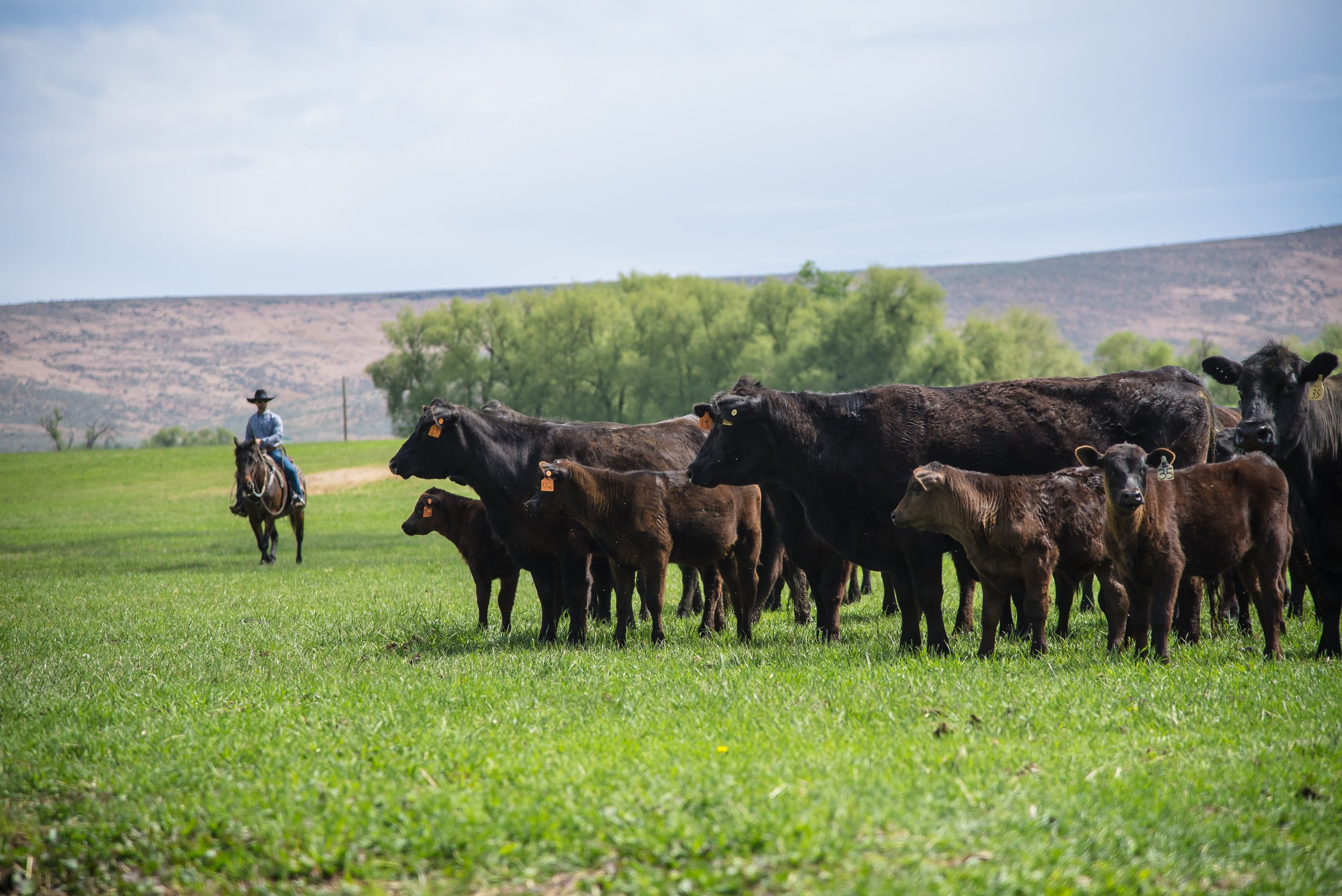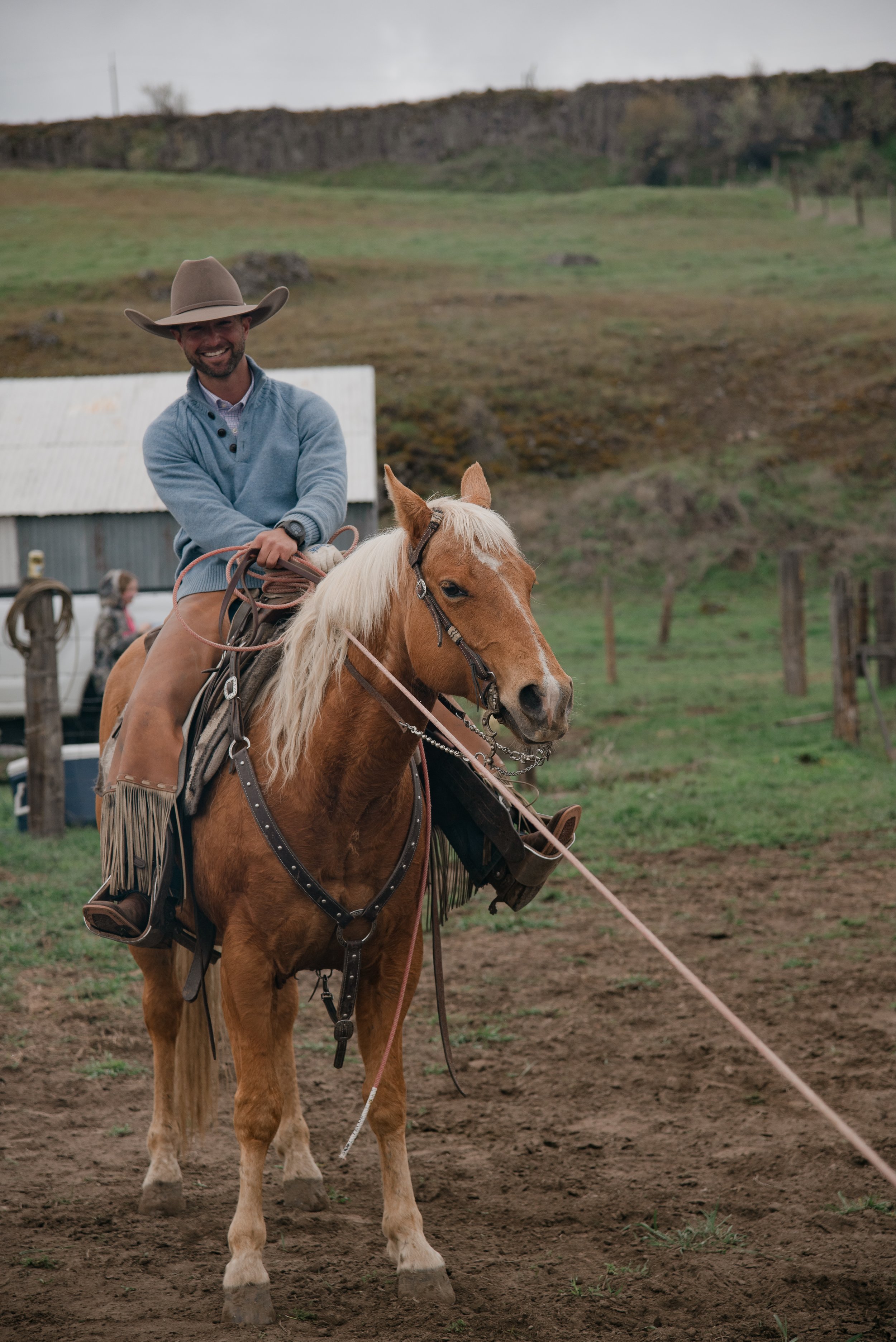
ABOUT OUR RANCH
The Flying Box Ranch has been in existence since when Bryce was born in 1991 . Decades before this effort began, two families had been growing their children in the ranching tradition: the Hendersons and the O’Neills.
Lynn Henderson is the second-generation Washington rancher to have worked the hills and valleys of the Kittitas and Klickitat Valleys. His parents’ legacy began in a small, unincorporated community called Lyle, situated above the generous Columbia River. Henderson Road in Lyle overlooks the Klickitat River. The original Henderson land holding is still in the family.
Lynn’s family raised sheep in these hills and valleys. While his dad was shearing sheep all over the Pacific Northwest, Lynn stayed behind, living with and learning from his “second family.” As soon as he finished high school, he came across his first land purchase opportunity, 160 wooded acres in Kettle Falls, Stevens County. About 20 years later, wanting to be closer to Lyle, he sold the Kettle Falls property and bought 350 acres in Ellensburg. Along with this new land purchase, he jumped all in and bought 200 head of cattle. He was 35 years old.

DISCOVER WHATS GOING ON
This was the official beginning of the Flying Box Ranch. The name is a translation of Lynn’s desire to learn how to fly, something that didn’t come to pass. Legacies are decipherable in action and symbol. Generations of ranching, dreams subsumed in the day-to-day work.
In the beginning, Lynn would sell beef direct to consumers. He’d load his VW and drive it west of the mountains, around the greater Seattle area, where he’d sell his beef to friends and acquaintances, plying his trade by word of mouth. He logged his property and continued other homesteading ventures to support his growing ranching operation. Logging became an opportunity to develop a small logging operation that he and wife, Linda, ran for about ten years.
Throughout all of these related efforts, Lynn bought, sold, and leased land. A lot of movement that culminated in today’s Flying Box Ranch enterprise.
Linda, originally an O’Neill, is the descendant of Irishmen who all settled in the Kittitas Valley in the 1940s. Her dad was a rancher. She learned the ropes and married Lynn, adding to his existing holdings and business ventures with her strong can-do attitude, bright smile, and tireless work. The Hendersons raised their son, Bryce, in this valley and relied on him to learn and to continue his studies in ranching, agriculture, and animal science. Now in his early 30s, Bryce - a through and through native to this valley - is the third generation of this hard-working lineage of land stewards.
Bryce began showing with the local 4H Club when he was 10. He went to college at WSU, on agricultural (ag) scholarships all the way, while still working ag throughout his school years. He majored in Ag Production and Management, minored in Animal Science, held “desk jobs” in related fields - Beef NW, Merck Animal Pharma, NW Farm Credit Services - and continuing helping run the ranch.
Flying Box Ranch practices land conservation in the tradition of the large western ranches. The animals are pastured, moving between high and low ground with the seasons. The land is naturally fertilized as a result of the cows’ grazing. At any time, the pastures are surrounded by predatory birds and animals; all “waste” is returned to the land, feeding the ecosystem that’s been in existence since time began.
Ranch life is iterative and consistent. Up at five to bottle-feed new calves. The trailer is loaded with the previous season’s hay to feed the mature animals. Three working dogs corral the animals and help get the job done.
Horses, dogs, cattle, and people. Every day of every week of every year for the past sixty years. This work keeps the Pacific Northwest supplied with delicious, wholesome beef grown the old-fashioned way.
“Horses make things better. They see past our flaws and mistakes. They see us for who we are. They help take the bad out and replace it with good. They give us companionship and make us better humans. If we allow them to, they can do that.
That’s why I love raising cattle and ranching. My love for ranching stems from my love for horses.”
— Bryce Henderson

